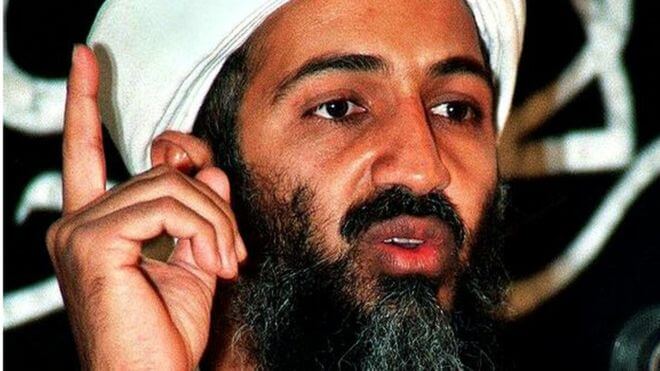By Edward Curtin
Published in www.globalresearch.ca
“I am waiting for my case to come up
And I am waiting
For a rebirth of wonder
And I am waiting for someone
To really discover America
And wail” – Lawrence Ferlinghetti
Some sullen sage once said that life is what we do while we wait for death. It’s not the kind of wise-guy wisdom I would try to refute, especially since I was one of those precocious kids who saw the skull at his first Pablum banquet. He seemed to be waiting for me even then, and I can only assume he’s waiting still, though, like the dead writer William Saroyan, I can enjoy thinking that an exception will be made in my case.
But wishful thinking aside, there’s no question but that Mr. Death knocks at everyone’s door sooner or later, better never than late, to coin a phrase in reverse and revert to wishful thinking. Nevertheless, it’s hard to deny the fact that he’s coming and everybody’s waiting for his knock. Unless, that is, you are in league with those technologists out in Silicon Valley, such as Ray Kurzweil, who are going to employ technology to knock death dead and live forever. But even Ray is waiting for what he calls the Singularity to kick in (he recently announced a date change from 2045 to 2029) – the day when humans and computers tie the knot and the former get uploaded into the latter and death disappears as humans live in the “cloud.” In the meantime, Ray swallows a few hundred pills a day to keep chugging along until he reaches the promised land. These artificial intelligence folks seem to feel they’re smarter than Plato, Jesus, Buddha, Shakespeare, and other idiots we used to think wise, but I think George Carlin meant to include the Artificial Intelligence crowd when he said,
“Think of how stupid the average person is, and realize half of them are stupider than that.”
Of course, rather than knock, Mr. Death just might blow the house down. Although it’s a little impersonal and there will be no introductions, a lot of people are waiting for that. Like the early Christians who were eagerly awaiting the imminent end of the world, most people today are unconsciously waiting for a nuclear holocaust – to be seen on the evening news, of course, or maybe announced by a tweet or an instant message as they scroll their little crystal rectangles to see what’s going down. Everyone will be, that’s what going down. The general consensus seems to be it will solve all problems, which is a brilliant insight in a Humpty Dumpty sort of brillig way in a looking-glass/ technological world where our most amazing technology is the nuclear bomb, rather recently joined in conjugal bliss with the computer that will save us from death.
In any case, what’s there to do? Keep waiting, that’s all, seems to be the popular approach. If I didn’t know any better, I’d think people were looking forward to meeting Mr. Death. For why else are they waiting without raising their voices in protest against U.S. nuclear first strike policy and the trillion dollar modernization of American nuclear weapons announced by Barack Obama and continuing under Donald Trump? Why do they wait in silent fear and trembling as the United States military and CIA maraud across the planet killing and maiming to profit their capitalistic masters? Why do they wait with mouths sealed shut for the neoconservatives in the Trump administration to ignite war with Russia and WW III?
That’s the big picture, so to speak, the big waiting game. Waiting in the smaller sense can also kill you, or keep you going (but don’t ask where), depending on your point of view. There are endless variations to this waiting game with the smaller joined to the larger in a powerful synergy that freezes people in their tracks.
This sense of waiting for something terrible to happen permeates the air these days. The media and government pump out incendiary reports in an endless stream of things to fear in an effort to immobilize the population. Neurotic fears have long been known to be most effective tools of social control. When these can be manufactured in great and continuous numbers, they have a cumulative effect of creating growing social anxiety, which is the case today. It is no accident that the dramatic increase in drug usage to quell anxiety, nervous stress, and depression has occurred concurrently with the mainstream media’s propagandistic outpouring of fear-mongering and the drug industries relentless advertising campaigns for their psychotropicfixes.
The news is constantly suggesting that some “apocalyptic” event is just around the corner. Like: there will be strong thunderstorms at 4:30 PM, or at least a 58.5% chance, so wear your helmet and take shelter. Like: a woman in South Dakota ate a cherry that had a double pit that caused her to almost choke to death, so be very careful eating cherries; “almost” might be “really” in your case. Like: the sun is very hot this year, so never step outside unless you are sprayed with chemical sunscreen from head to toe. Like: there is a bug or bird or some critter that has recently been detected that is carrying a disease so deadly that if it flies by you within 11 ½ inches you will die a slow tortuous death in four days, five at the most. All kinds of neurotic fears are endlessly broadcast to keep folks on their anxiety-ridden toes while the real dangers go unmentioned and bubble under the surface. This is the corporate media’s job, of course, one they have perfected.
Wherever you go in the United States, you can see on people’s faces the strain of waiting for some absurd fear to become a reality. You can almost feel them holding their breaths in nervous anticipation. It keeps people occupied.
Lewis Lapham says it eloquently in the recent issue of Lapham’s Quarterly:
In my capacity as human being, I’ve met with most if not all of the descriptives handed down from antiquity, but in my profession as journalist, I’ve encountered primarily the distinctions between what Sigmund Freud in 1917 defines as real fear and neurotic fear, the former a rational and comprehensible response to the perception of clear and present danger, the latter “free-floating,” anxious expectation attachable to any something or nothing that catches the eye or the ear, floats the shadow on a wall or a wind in the trees. Real fear invites action, the decision to flee or fight dependent upon “our feeling of power over the outer world”; expectant fear induces states of paralysis, interprets every coincidence as evil omen, prophesizes the most terrible of possibilities, ascribes “a dreadful meaning to all uncertainty.
Ironically, it was Freud’s nephew, Edward Bernays, the great red, white, and blue American propagandist,who took his uncle’s insights and used them in the service of corporate and government control. By inducing irrational fears of a foreign enemy – i.e. the Soviet Union in the 1950s – as he urged President Eisenhower, you could distract people from the real threat, which was their own government and the CIA with whom Bernays worked overthrowing the democratically elected of Guatemala, among other evil projects. Fake fears large and small could paralyze the average person and create loyalty to the state and capitalism. They would wait for their protectors to tell them what to do. The present Russia bashing and fear-mongering is straight from Bernays’ play book.
Is it any wonder that Samuel Becket’s Waiting for Godot was such a popular play in the 1950s? Godot never came then and he’s not coming now, but waiting is still the name of the game. The character Vladimir sums up the waiting game:
as I sleeping, while the others suffered? Am I sleeping now? Tomorrow, when I wake, or think I do, what shall I say of today? That with Estragon my friend, at this place, until the fall of night, I waited for Godot?
Wasn’t it Camus who said you can encounter the absurd on every street corner? While I would agree, I would add that you can also run into Mr. Death while waiting on a street corner. If you are a waiter, meeting him can change your life.
An absurdly strange thing once happened to me. I was waiting on a street corner in New York City, the southwest corner of 5th Ave. and West 47th St. to be precise, on an eerily silent Sunday morning. The streets were deserted as I waited for The Gotham Book Mart to open. Biding my time and bored while waiting, I walked into the entrance way of a diamond store and was looking in the window at the jewelry that I had zero interest in. Diagonally through the window I could see a face staring at me from the street. Was I hallucinating? A pale, death mask visage, milky white hair, staring and staring, as if immobilized. Chilled by this ghostly apparition as cold as the glittering diamonds, I walked along the glass window to the street, but the face followed along the front window glass, staring at me the whole time. A moving white reflective shadow taunting me. I thought: Mr. Death has found me waiting, so I better get moving and get the hell out of here. But when I got to the street and turned right, the pasty face met me face-to-face, staring through strange round translucent glasses – and then he lifted a tiny device and shot me. “What are you doing?” I shouted as I stumbled back. “I didn’t give you permission to shoot me.”
Shrinking into his whiteness, Andy Warhol turned and meekly walked away, carrying my image with him in his tiny spy camera. No doubt it still exists somewhere since Warhol was a compulsive hoarder of anything he ever touched, his talismans against death, his greatest fear, his obsession.
Poor Andy, he was so afraid of death he shot everything he could see, including me. Time was his enemy, and everything he did was aimed at killing time. He was a stop-time artist, waiting, lurking to get the perfect shot, to sneak up on his own death and shoot it dead. But he never ran into his own death since it was nowhere to be seen, and it snuck up on him when he least expected it.
But he saw me, and I have to thank him for sneaking up and spooking me as I waited that morning for what I didn’t know. He played Mr. Death for me, and made me realize that waiting is a waste of time. And time is all we have, so don’t wait too long.











